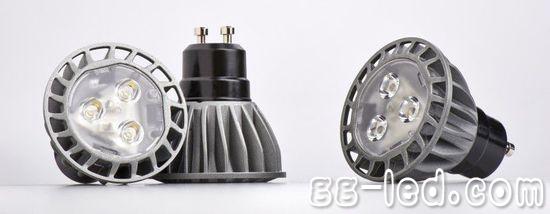
Li-Fi with network
If you know TED, it is probably no stranger to Professor Haas, who showed wireless communication technology with LED bulbs on the TED stage in 2011. It was also after the speech that the word Li-Fi was gone, and it is now commonly used to refer to two-way wireless network communication technology using visible light. Li-Fi differs little from the well-known Wi-Fi, which is a communication system that transmits information over radio waves, while the latter achieves the same effect by visible light. Because LEDs are special electronic components, you can transmit information by generating an "optical morse code" by switching LEDs one billion times per second.
This is certainly not a new concept, but Haas allows ordinary LED lights to be connected to the network. With Li-Fi, users can connect to the Internet within the limits of LED lighting, and even use headlights to transmit data.
Haas started the Visible Light Communication (VLC) study in 2008 and established PureLiFi (formerly known as PureVLC) in 2012. Although most of their research is still in the prototype stage, it is impossible to place orders directly on Amazon, but there are already some available products. The first product is called Li-1st. The product's uplink and download rates can reach 5MBPs, and the transmission range is about 3 meters. However, experiments have shown that the rate of Li-Fi can reach 10Gbps.
Compared to Wi-Fi, Li-Fi is safer because the latter's signal can't pass through the wall, and it can separate the upstream and downstream communication channels, which means that the intruder has to be in the same room as you, and at the same time crack the upper and lower sides. Two channels.

Will Li-Fi replace Wi-Fi?
If Li-Fi has so many advantages, will it replace Wi-Fi? At present, it seems that it will not be in the short term. Although it is not said that the light is covered by hand, the Li-Fi signal will be interrupted because the light will also turn. But opaque solids still affect the state of the Li-Fi network, which is currently only a complementary tool. In comparison, Li-Fi is more suitable for closed environments such as airplanes, trains, submarines and cars.
In addition, the replacement of old and new equipment also takes time. Although Li-Fi is safer, it is impossible to convince everyone to use the new device immediately, especially when traditional Wi-Fi still meets the needs of the Internet. For some merchants, it is obviously not realistic to abandon the equipment purchased with a lot of money. This is why Haas considers the use of LED lights as a carrier. On the one hand, the transmission rate of LEDs is faster than that of traditional incandescent lamps; on the other hand, LEDs are widely used and more acceptable, and can reduce many obstacles in the popularization process.
Li-Fi market with the prospect <br> <br> It is estimated that by 2018 Li-Fi market will reach $ 6 billion. Moreover, in addition to indoor applications such as the Internet, researchers will use Li-Fi for more accurate location services, just like the popular iBeacon technology.

Each lamp can have a special code, equivalent to an IP address; after the relevant photoreceptor is implanted in the phone, the code for the light can be identified. This technique can be used to partition the space. If you are in a more complicated place such as a train station, airport, museum, etc., this technology can help users to locate instantly. In a museum or store, users can receive corresponding commentary information as long as they are close to the relevant exhibits or products, and can also push corresponding discount information and advertisements.
Haas also revealed that they are working with a "large aircraft manufacturer", which means that Li-Fi can be enjoyed on the plane in the future. There are reading lights on the seats of the aircraft, so we can imagine a scene like this: The flight attendant informs you that the plane is about to take off, please turn off the phone, but you only need to turn on the reading light to continue surfing the Internet with devices such as iPads and laptops.
However, entertainment is not the primary factor considered by aircraft manufacturers, they are more concerned about costs. Li-Fi eliminates the hassle of wiring, allowing airlines to adjust the seat as needed at any time; and the cable of the transmission line adds a lot of weight, and the use of LED lights does not have to be considered.

The 3300V mine intrinsically safe Explosion Proof Motor Starter has multi-level technology, long-distance power supply, and can be set to the synchronous control mode at will, which can realize the pre-tightening bottom chain function and the four-quadrant grid feedback function. The leading technology for isolating water cooling inside and outside is particularly prominent. This Explosion Proof Manual Motor Starter has the advantages of small output harmonics, long-distance power supply and output torque closer to sine wave.
Variable Frequency Drive,3300V Mine Variable Frequency Drive,3300V Flameproof Vfd,3300V Mine Flameproof Vfd,Explosion Proof Motor Starter,Explosion Proof Motor Starter Price
FGI SCIENCE AND TECHNOLOGY CO., LTD , https://www.fgi-tech.com
